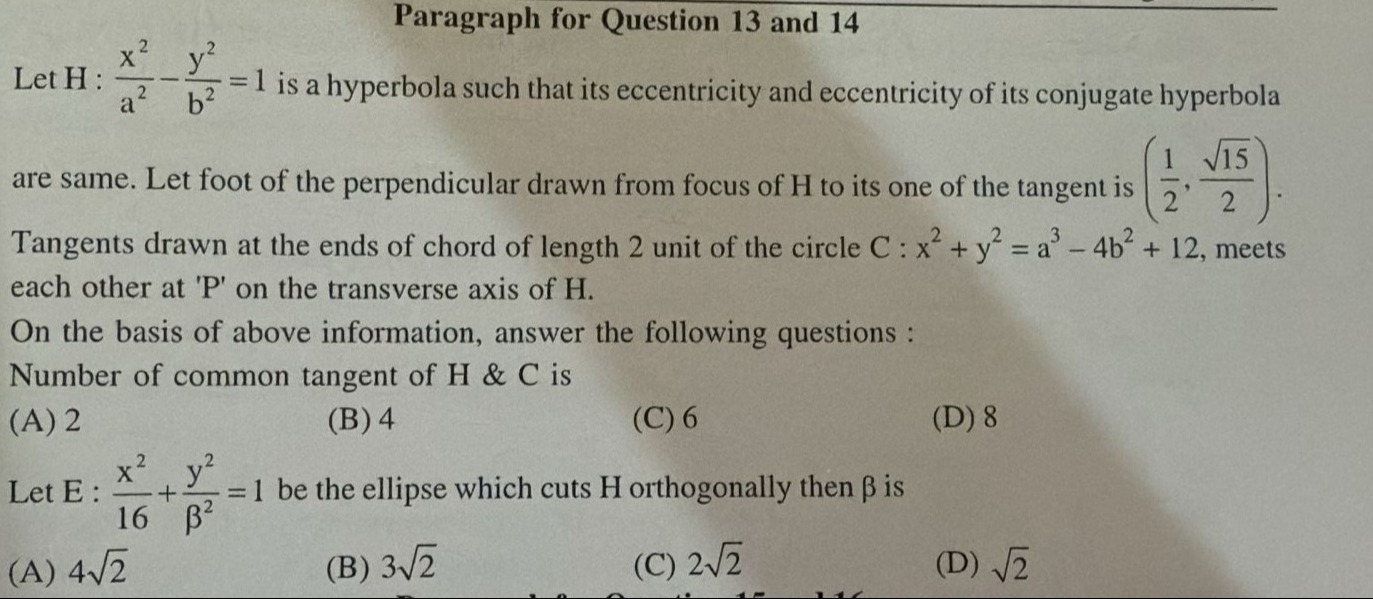Question
Question: Let E: $\frac{x^2}{16} + \frac{y^2}{\beta^2} = 1$ be the ellipse which cuts H orthogonally then $\be...
Let E: 16x2+β2y2=1 be the ellipse which cuts H orthogonally then β is

42
32
22
2
22
Solution
The given hyperbola is H: a2x2−b2y2=1. The eccentricity of H is e=1+a2b2. The conjugate hyperbola is b2y2−a2x2=1. The eccentricity of the conjugate hyperbola is e′=1+b2a2. Given that e=e′, so 1+a2b2=1+b2a2. This implies a2b2=b2a2, which means a4=b4. Since a,b>0, we have a=b. The hyperbola H is a rectangular hyperbola: x2−y2=a2. The eccentricity is e=1+a2a2=2. The foci of the hyperbola are (±ae,0)=(±a2,0).
The locus of the foot of the perpendicular from the focus to any tangent of the hyperbola a2x2−b2y2=1 is the auxiliary circle x2+y2=a2. Given that the foot of the perpendicular from a focus to one of the tangents is (21,215). This point must lie on the auxiliary circle x2+y2=a2. So, (21)2+(215)2=a2. 41+415=a2 which simplifies to a2=4. Since a=b, we also have b2=4. The hyperbola H is x2−y2=4.
The circle C is x2+y2=a3−4b2+12. Substitute a=2 and b=2: x2+y2=23−4(22)+12=8−4(4)+12=8−16+12=4. The circle C is x2+y2=4.
Now, let's address the question: Let E: 16x2+β2y2=1 be the ellipse which cuts H orthogonally then β is. Hyperbola H: x2−y2=4, which is 4x2−4y2=1. Here A2=4,B2=4. Ellipse E: 16x2+β2y2=1. Here ae2=16,be2=β2.
The condition for an ellipse ae2x2+be2y2=1 and a hyperbola A2x2−B2y2=1 to intersect orthogonally is ae2−be2=A2+B2.
Substituting the values: 16−β2=4+4. 16−β2=8. β2=16−8=8. β=8=22.
